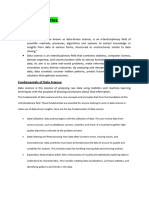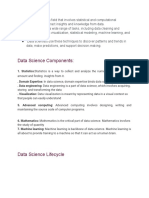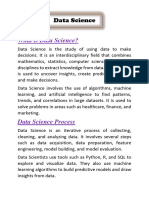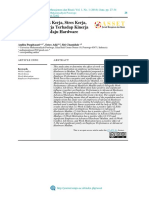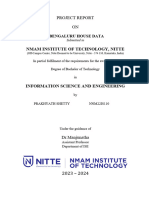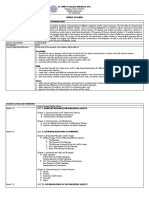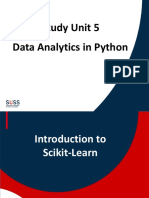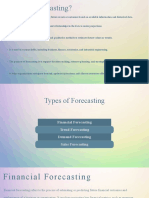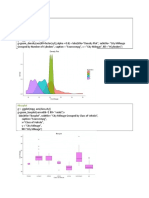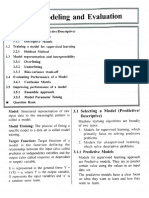0% found this document useful (0 votes)
9 views18 pagesModule 1 Introduction Ds
The document provides an overview of data science, defining it as the study of collecting, processing, and analyzing data to extract insights for decision-making, highlighting its significance through the 3Vs: volume, velocity, and variety. It discusses the applications of data science across various sectors such as finance, healthcare, and education, as well as the essential skills and tools required for data scientists, including programming languages like Python and R. Additionally, it covers the types of data, data collection methods, and the importance of open data initiatives.
Uploaded by
AnushaCopyright
© © All Rights Reserved
We take content rights seriously. If you suspect this is your content, claim it here.
Available Formats
Download as DOCX, PDF, TXT or read online on Scribd
0% found this document useful (0 votes)
9 views18 pagesModule 1 Introduction Ds
The document provides an overview of data science, defining it as the study of collecting, processing, and analyzing data to extract insights for decision-making, highlighting its significance through the 3Vs: volume, velocity, and variety. It discusses the applications of data science across various sectors such as finance, healthcare, and education, as well as the essential skills and tools required for data scientists, including programming languages like Python and R. Additionally, it covers the types of data, data collection methods, and the importance of open data initiatives.
Uploaded by
AnushaCopyright
© © All Rights Reserved
We take content rights seriously. If you suspect this is your content, claim it here.
Available Formats
Download as DOCX, PDF, TXT or read online on Scribd
/ 18
















